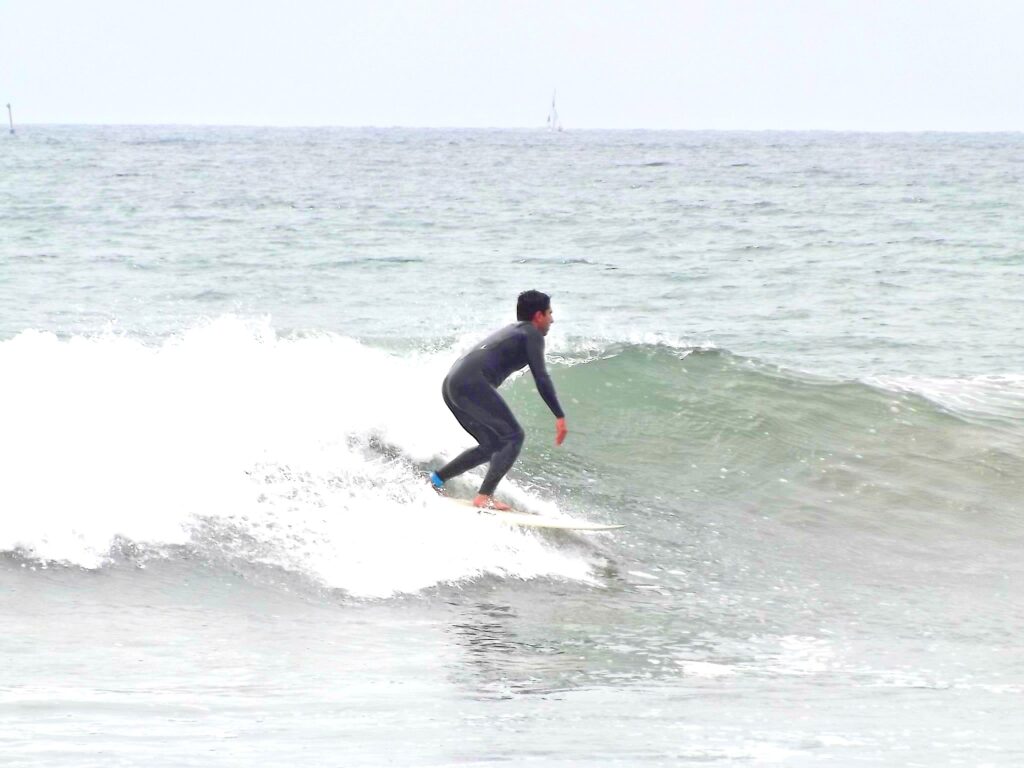Leading Surfing Short Board Techniques

Surfing Short Board Techniques
Many of my Oceanside Surf Lesson CA students want to move to shorter boards as soon as possible. Most don’t realize the slow progression through the short board techniques begin with mastering the high volume board techniques.
The short board is by nature less stable than a higher volume long board or beginner soft top. Smart surfers stay with more width and thickness as they get progressively shorter boards to create a hybrid of values and make short board surfing easier. The first thing one notices with lower volume boards is the paddling is more difficult and you move slower. This makes it more tiring and harder to get in front of waves.
Surfing Short Board Techniques
A major difference in short boarding and long boarding created by lower volume is where you have to catch the wave. The long boarder in waves that are not steep, can catch a wave as it starts to show or on small wave days, anyplace along the arc. A short boarder needs a high arc and lip to power the lower volume. Therefore the short boarder has to paddle in front of the wave so it comes under him, but not so far he is in the impact zone.
The first technique a short boarder needs is acceleration. Short boarders don’t really trim like long boarders. They pump to stay ahead of the lip. They move the front foot on the nose up and down the wave for speed.
A second technique a short boarder needs is bottom turns. They can drop down a steep face without as much worry about pearling, but need to get into the pocket to ride the unfurling wave. The bottom turn is rotating the upper body in the direction of travel with a little pressure on the toes or heels on the rail in the wave face.
The Bottom Turn
The bottom turn also takes the short boarder up the wave face to perform any trick or maneuver. The cut back is a common maneuver in the short board arsenal which is reversing the rotation of the body back towards the lip to gain power, to stall waiting for the lip, to position to get into a barrel, or for style.
Ripping the lip combines a bottom turn and a cutback at the top of the lip to ride up and then down the wave. A lot of short boarders use the hand of the leading foot to point or throw in the direction they want to travel on the rip.
These will get you started and include what you will always practice.
For Surf Lessons in Oceanside, see my Home Page
See my Dry Land and Water Demo video